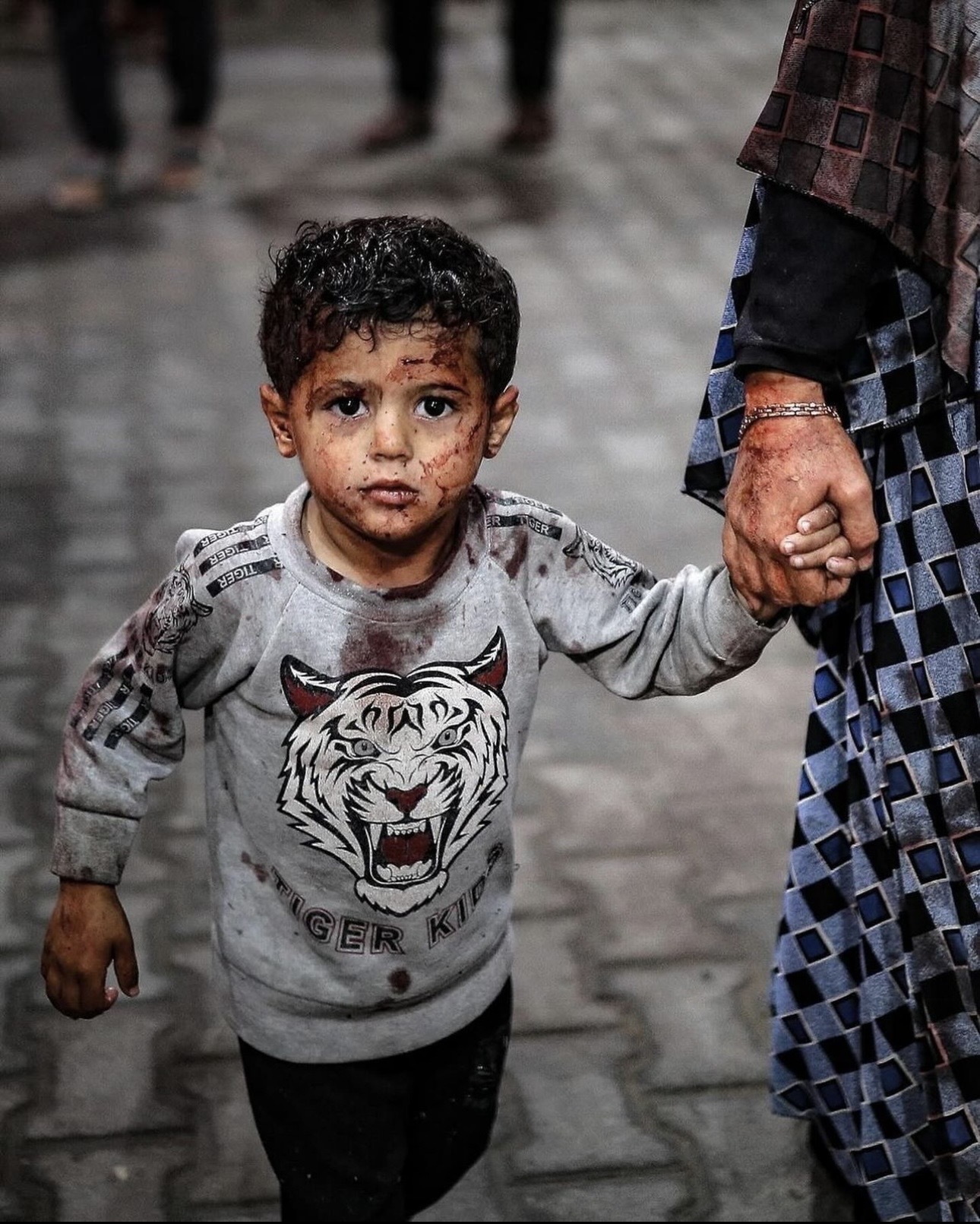We Communicate For Happy Children
 Famine in Gaza: Adults are hungry so that children can eat
Famine in Gaza: Adults are hungry so that children can eat 
“The number of victims of hunger, malnutrition, and associated diseases (in the Gaza Strip), especially children, may in the long term exceed the number of those killed directly because of the Israeli attack on the Strip.”
The Euro-Mediterranean Human Rights Monitor presented an analysis of the catastrophic food situation in the Gaza Strip and indicators of the beginning of the spread of famine, especially in the northern governorates, in a policy paper entitled “The Gaza Strip: A scene of genocide since October 7th and a potential famine zone on February 7th.” The paper was based primarily on reports issued by competent international bodies, most notably the Global Initiative of the Integrated Food Security Phase Classification (IPC), whose five-stage classification has become the international standard for classifying food insecurity and malnutrition cases in humanitarian contexts.
The Euro-Med Monitor presented the tragic living conditions faced by the residents and children of the Gaza Strip, specifically in the northern governorates, explaining, “The Israeli aerial and naval attacks and Israeli ground operations caused the isolation of the northern governorates and their remaining residents there, whose number ranges between 400 and 500 thousand people.” It pointed out that “85% of the population of the Gaza Strip have become internally displaced, concentrated in places without services and not safer or less isolated, and in areas whose geographical area is getting smaller with raid after raid, and whose proximity to the southern border increases day after day.”
Based on the report of the analysis team of the global initiative “Integrated Food Security Phase Classification” (IPC), it is clear that the entire population of the Gaza Strip suffers, i.e. 100%, from severe acute food insecurity (stage 3 and above in the IPC) and that they need Urgent humanitarian measures and assistance to preserve life. According to the Global Initiative report, this represents the highest proportion of the population facing high levels of acute food instability that the Initiative has ever assessed for any region or country since its establishment in 2004.
According to the initiative’s report, between December 8, 2023, and February 7, 2024, 26% of the Gaza Strip’s population will be in the famine stage (the fifth and final stage), suffering from an extreme state of food deprivation, an apparent emergence of extreme hunger, and very severe levels of acute malnutrition cases and an increase in deaths resulting from hunger, malnutrition, or diseases related to them.
The IPC report also notes that four out of every five families in the northern governorates and half of the displaced families in the southern governorates spend entire days and nights without eating, and that many adults suffer from hunger so that children can eat.
The Euro-Med Monitor policy paper indicates that the Famine Review Committee (FRC) concluded that the findings of the IPC report are reasonable after reviewing it. It also concluded that the famine threshold (stage five) for severe poor food security has already been crossed, and that the extent of the spread of famine among the total population in the Strip is likely to be higher than the mentioned percentages.
The paper revealed that the average amount of humanitarian aid allowed into the Strip ranges between 70 and 100 trucks, only two of which go to the northern governorates, which are still inhabited by about half a million people, at least half of whom are children. Video clips of children in the north looking for grass to eat have spread, and the Ministry of Health in Gaza announced that residents of the north could not even find animal fodder to eat. This comes at a time when video clips published by Israeli army snipers showed them targeting livestock in the northern regions.
In addition, the Euro-Med Monitor called on countries to act immediately before it is too late, explaining that this begins by respecting the international obligations that all countries have to stop and prevent the crime of genocide in the Gaza Strip, as it is the root of the famine. It also called for the immediate resumption of funding for UNRWA, as it is the primary international agency currently responsible for introducing and distributing humanitarian aid in the Strip.
The Monitor addressed the relevant United Nations institutions and the Integrated Food Security Phase Classification (IPC) mechanisms, calling on them to “work at present to strengthen the work of monitoring and evaluation mechanisms for the food crisis, including tracking indicators of the acceleration of the deterioration of the food crisis and the spread of famine, documenting data and providing analyses based on the phase classification system. Most importantly, the Monitor urges IPC to submit its second report as soon as possible, in which it addresses an updated assessment of the food crisis and an updated analysis of famine indicators, and to work and coordinate with all parties to declare a state of famine and direct the world’s attention to the humanitarian situation at the Strip.”
Euro-Med Monitor also called on global and international institutions to strengthen work in providing immediate humanitarian aid to the residents of the Gaza Strip and to continue to apply pressure to facilitate and ensure safe and unhindered access to humanitarian assistance to all parts of the Gaza Strip. It called on those institutions to focus on and demand a ceasefire, without which it is not possible to talk about an actual appropriate environment for providing humanitarian aid and beginning to restore the provision of basic services.
